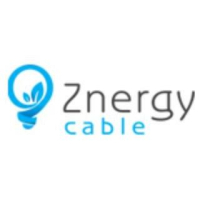How Do You Troubleshoot Ground Fault Issues in Solar Cable Systems?
Solar Cable Systems

Solar Cable
Introduction:
Ground fault issues in solar cable systems can impede the efficient operation of solar panel installations, potentially leading to reduced energy production and safety concerns. Troubleshooting these issues requires a systematic approach, encompassing both detection and resolution strategies. In this comprehensive guide, we will delve into the depths of troubleshooting ground fault issues in solar cable systems, offering insights into detection methods, root causes analysis, and effective resolution techniques.
Understanding Ground Faults in Solar Cable Systems:
A ground fault occurs when an unintended electrical connection is established between a live conductor and the grounding system. In solar cable systems, ground faults can arise due to various factors, including insulation degradation, physical damage to cables, improper installation, or environmental factors such as moisture ingress or rodent damage. Detecting and addressing ground faults promptly is crucial to prevent electrical hazards, system downtime, and energy losses.
Visit also: How Does Type 450 Cable Perform in High-Flex Applications
Detection Methods:
- Insulation Resistance Testing: Conducting insulation resistance tests using specialized equipment can help identify potential ground faults by measuring the resistance between conductors and ground.
- Current Monitoring: Monitoring the current flow in solar cable circuits can reveal irregularities indicative of ground faults, such as unbalanced currents or fluctuations.
- Visual Inspection: Regular visual inspections of cable connections, junction boxes, and conduit routes can uncover signs of physical damage, corrosion, or improper grounding.
- Thermal Imaging: Utilizing infrared thermography allows for non-invasive detection of hotspots along cable routes, which may indicate localized ground faults or overheating due to poor connections.
Root Cause Analysis:
Once a ground fault is detected, it is essential to conduct a thorough root cause analysis to determine the underlying factors contributing to the issue. Common causes of ground faults in solar cable systems include:
- Insulation Degradation: Aging or damaged insulation can compromise the integrity of the cable, leading to ground faults.
- Mechanical Damage: Physical impacts, abrasion, or improper handling during installation can cause cable insulation to deteriorate, increasing the risk of ground faults.
- Environmental Factors: Exposure to moisture, extreme temperatures, UV radiation, or corrosive substances can accelerate cable degradation and promote ground fault formation.
- Poor Installation Practices: Incorrect cable routing, inadequate cable protection, loose connections, or insufficient grounding can create conditions conducive to ground faults.
Resolution Techniques:
- Isolation and Disconnection: Once the location of the ground fault is identified, isolating the affected circuit and disconnecting it from the system can prevent further damage and ensure safety.
- Cable Repair or Replacement: Repairing or replacing damaged sections of the cable with appropriate materials and techniques is essential to restore the integrity of the system.
- Reinforcement of Insulation: Applying additional insulation or protective measures, such as heat-shrink tubing or conduit sleeves, can enhance the insulation resistance and durability of the cables.
- Corrective Maintenance: Implementing regular maintenance schedules to inspect, clean, and test solar cable systems can help prevent future ground faults and ensure long-term reliability.
- Environmental Protection: Implementing environmental safeguards, such as waterproof enclosures, rodent barriers, or UV-resistant coatings, can mitigate the impact of external factors on cable integrity.
- Training and Awareness: Providing training to personnel involved in the design, installation, and maintenance of solar cable systems can foster awareness of best practices and safety protocols, reducing the risk of ground faults.
Troubleshooting a Ground Fault in a Solar Panel Installation
Consider a scenario where a ground fault is detected in a rooftop solar panel installation. The following steps outline a systematic approach to troubleshooting and resolving the issue:
- Initial Assessment: Conduct a visual inspection of the cable routes, junction boxes, and panel connections to identify any visible signs of damage or irregularities.
- Insulation Resistance Testing: Use a megohmmeter to measure the insulation resistance between conductors and ground at various points along the cable routes.
- Current Monitoring: Install current sensors or clamp meters to monitor the current flow in the affected circuits and identify abnormal patterns indicative of ground faults.
- Thermal Imaging: Perform a thermal scan of the solar panel array and associated cabling to detect any hotspots indicative of localized ground faults or overheating.
- Root Cause Analysis: Analyze the findings from the inspection and testing to determine the root causes of the ground fault, such as insulation degradation, mechanical damage, or environmental factors.
- Isolation and Disconnection: Isolate the affected circuit from the rest of the system and disconnect it to prevent further damage and ensure safety.
- Cable Repair or Replacement: Repair or replace the damaged sections of the cable using appropriate materials and techniques, ensuring proper insulation and connection integrity.
- Reinforcement of Insulation: Apply additional insulation or protective measures to reinforce the integrity of the repaired or replaced cable segments.
- Preventive Measures: Implement preventive maintenance measures, such as regular inspections, cleaning, and testing, to prevent future ground faults and ensure the long-term reliability of the solar panel installation.
Conclusion:
Troubleshooting ground fault issues in solar cable systems requires a systematic and multidisciplinary approach, encompassing detection, root cause analysis, and effective resolution techniques. By employing advanced testing methods, conducting thorough inspections, and implementing preventive measures, solar panel installers and maintenance personnel can mitigate the risks associated with ground faults and ensure the safety, reliability, and performance of solar energy systems.
Visit also: Triplex Wire Perform in High Temperature Environments
